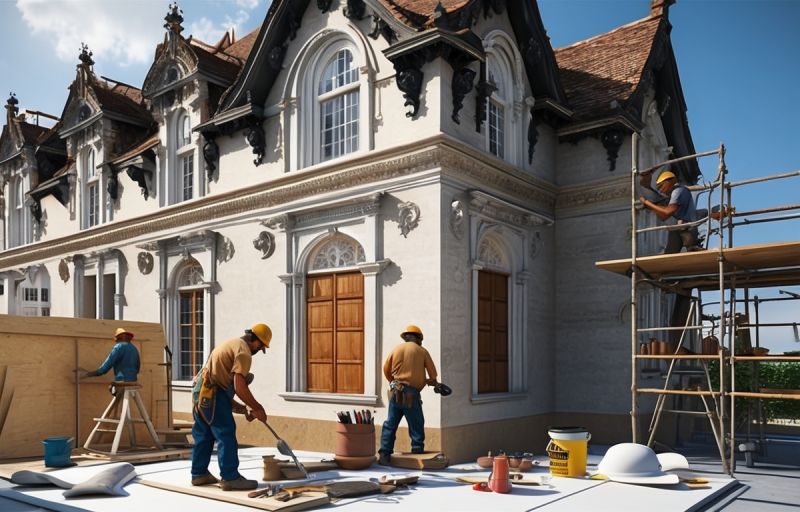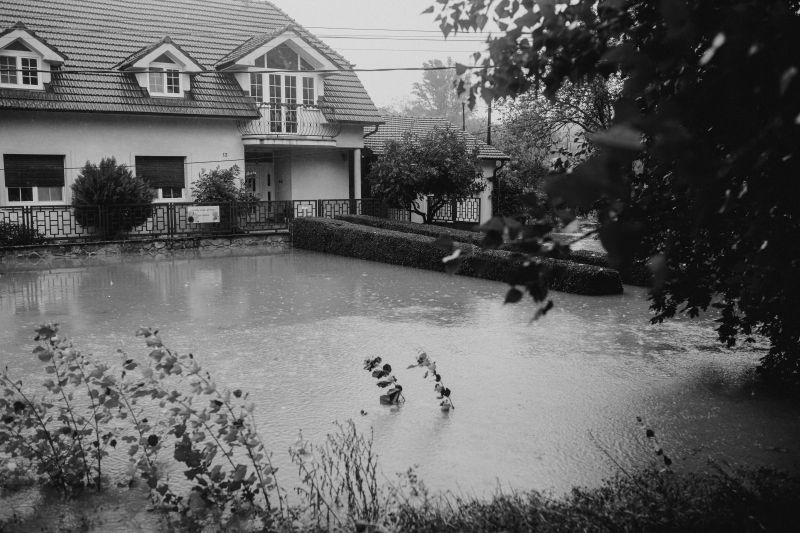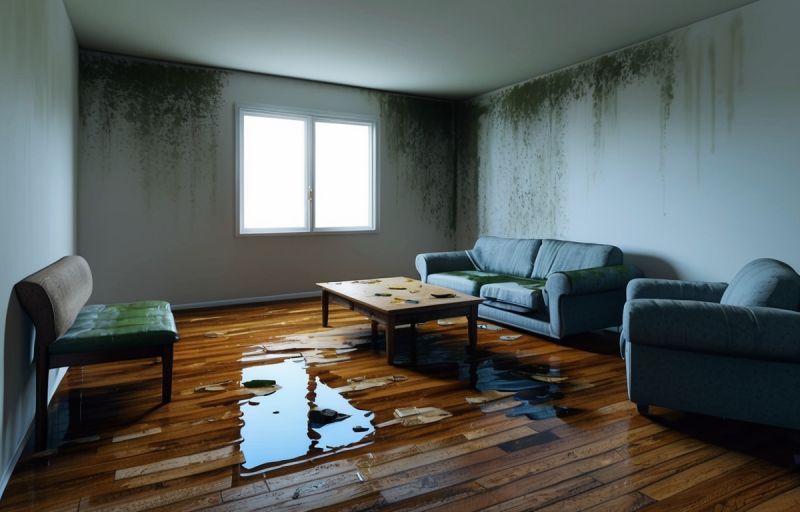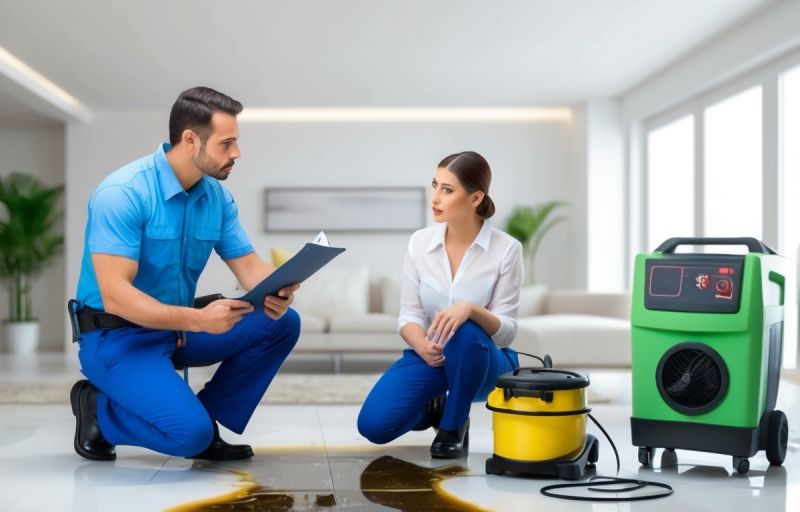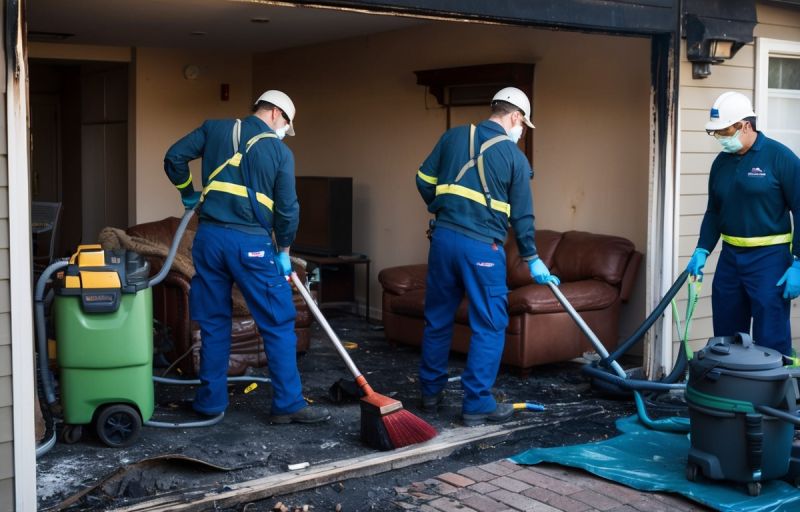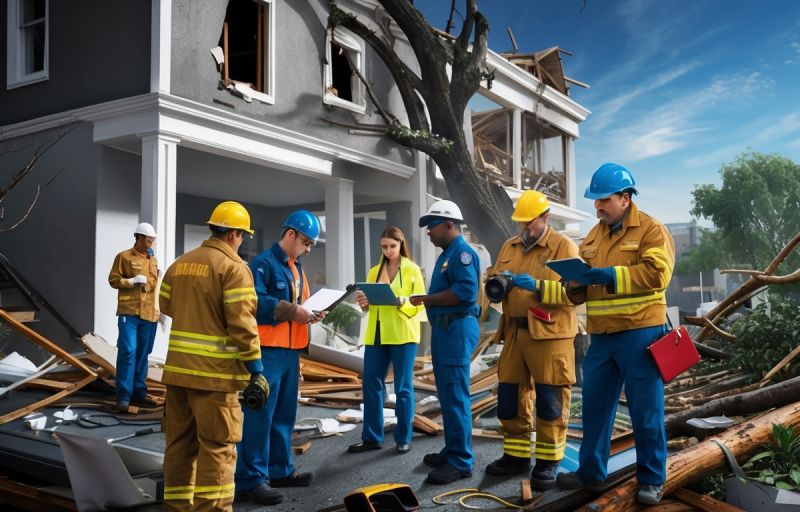Effective communication with restoration teams is essential for ensuring a smooth and successful recovery process after incidents like water or fire damage. When disaster strikes, having clear and open lines of communication can significantly impact the efficiency of the restoration efforts. Whether you are dealing with water damage restoration or fire damage recovery, understanding how to convey your needs and concerns can lead to better outcomes. At COMMITTED TO QUALITY SERVICE, we pride ourselves on providing fast, friendly, and professional service. Our team is equipped with specialized tools designed for drying structures affected by severe water damage, and we understand the importance of quick mitigation in fire restoration. By following these tips for effective communication with restoration teams, you can help facilitate a seamless restoration process and ensure that your property is returned to its pre-damage condition as quickly as possible. Call us now at 855-933-7935 to learn more about our services and how we can assist you during this challenging time.
Understanding the Role of Restoration Teams
Restoration teams play a crucial role in the aftermath of disasters such as floods, fires, and mold infestations. Their primary objective is to restore properties to their pre-damage condition while ensuring the safety and well-being of the occupants. Understanding the multifaceted responsibilities of these teams can significantly enhance communication and collaboration during the restoration process.
Restoration teams are composed of skilled professionals who specialize in various aspects of property recovery. They typically include project managers, technicians, and specialists in areas such as water damage, fire damage, and mold remediation. Each member brings a unique set of skills that contribute to the overall effectiveness of the restoration effort. For instance, water damage specialists are trained to assess and mitigate the effects of water intrusion, while fire damage experts focus on smoke and soot removal, structural repairs, and odor elimination.
One of the key responsibilities of restoration teams is to conduct thorough assessments of the damage. This involves identifying the extent of the destruction, determining the necessary repairs, and developing a comprehensive restoration plan. Effective communication during this phase is essential, as it ensures that all parties involved have a clear understanding of the situation and the steps required to address it. Homeowners should feel empowered to ask questions and express concerns, as this dialogue can lead to a more tailored and efficient restoration process.
In addition to assessments, restoration teams are responsible for implementing the restoration plan. This includes coordinating various tasks such as water extraction, drying, cleaning, and repairing damaged structures. Each task requires precise execution and often involves multiple team members working together. For example, while one technician may focus on drying out a flooded basement, another might be cleaning soot from walls affected by fire. Clear communication among team members is vital to ensure that the restoration progresses smoothly and that no steps are overlooked.
Restoration teams also play a significant role in communicating with insurance companies. They often assist homeowners in documenting the damage and preparing claims, which can be a complex and stressful process. By providing detailed reports and photographs, restoration teams help ensure that homeowners receive the compensation they need to cover the costs of repairs. Homeowners should maintain open lines of communication with both their restoration team and their insurance adjuster to facilitate a seamless claims process.
Moreover, restoration teams prioritize safety throughout the restoration process. They are trained to recognize potential hazards, such as mold growth or structural instability, and take appropriate measures to mitigate these risks. Homeowners should be informed about safety protocols and any necessary precautions they need to take during the restoration process. This not only protects the occupants but also ensures that the restoration work can proceed without interruptions.
It is also important to note that restoration teams are equipped with advanced technology and techniques to handle various types of damage. For instance, thermal imaging cameras can detect hidden moisture, while specialized air scrubbers can remove airborne contaminants. By utilizing these tools, restoration teams can provide a more thorough and effective restoration service. Homeowners should inquire about the methods and equipment being used, as this can provide insight into the quality of the restoration work.
In summary, restoration teams are essential in the recovery process following property damage. Their expertise in assessing, planning, and executing restoration efforts ensures that homes and businesses can return to normalcy as quickly and safely as possible. Effective communication with restoration teams is paramount, as it fosters collaboration and enhances the overall restoration experience. Homeowners should feel encouraged to engage with their restoration team, ask questions, and express any concerns they may have. By doing so, they can contribute to a more efficient and successful restoration process.
For more information about the services offered by restoration teams, you can visit our services page. If you are interested in understanding how to identify hidden water damage early, check out our article on hidden water damage. For further insights into our mission and values, please visit our mission page.
As you navigate the restoration process, remember that effective communication is key to achieving the best possible outcome.
Establishing Clear Communication Channels
Effective communication is the cornerstone of successful collaboration between property owners and restoration teams. Establishing clear communication channels is essential to ensure that everyone involved is on the same page, especially during stressful situations such as water damage, fire damage, or mold remediation. When a disaster strikes, the immediate response can significantly impact the restoration process, making it crucial to have open lines of communication from the outset.
To begin with, it is important to identify the primary point of contact within the restoration team. This individual will serve as the liaison between the property owner and the rest of the team, ensuring that information flows smoothly and efficiently. By having a designated contact person, property owners can avoid confusion and streamline communication, allowing for quicker decision-making and problem-solving.
Regular updates are another vital aspect of maintaining clear communication. Restoration projects can often take time, and property owners may feel anxious about the progress. Scheduling regular check-ins or updates can help alleviate these concerns. Whether through phone calls, emails, or in-person meetings, keeping property owners informed about the status of the restoration work fosters trust and transparency. This practice not only reassures property owners but also allows them to ask questions and provide input, which can be invaluable in tailoring the restoration process to their specific needs.
Utilizing technology can also enhance communication between restoration teams and property owners. Many restoration companies now use project management software or mobile applications that allow for real-time updates and communication. These tools can provide property owners with access to project timelines, photos of the work being done, and even invoices. By leveraging technology, restoration teams can keep property owners engaged and informed, making the entire process more efficient.
In addition to regular updates, it is essential to establish clear expectations from the beginning. This includes discussing the scope of work, timelines, and any potential challenges that may arise during the restoration process. By setting realistic expectations, both parties can avoid misunderstandings and frustrations later on. Property owners should feel empowered to ask questions about the restoration process, and restoration teams should be prepared to provide thorough explanations and guidance.
Another important aspect of clear communication is the use of straightforward language. Restoration work can involve technical jargon that may be unfamiliar to property owners. It is crucial for restoration teams to explain processes and terms in a way that is easy to understand. This not only helps property owners feel more comfortable but also ensures that they are fully informed about the work being done on their property.
Feedback is also a critical component of effective communication. After the restoration work is completed, property owners should be encouraged to share their thoughts and experiences. This feedback can provide valuable insights for restoration teams, helping them improve their services and communication strategies in the future. Additionally, positive feedback can be beneficial for the restoration company, as it can enhance their reputation and attract new clients.
Lastly, it is important to remember that communication should be a two-way street. Restoration teams should actively listen to property owners’ concerns and preferences. By fostering an environment where property owners feel comfortable expressing their thoughts, restoration teams can better address their needs and expectations. This collaborative approach not only enhances the restoration process but also builds a strong relationship between the property owner and the restoration team.
In conclusion, establishing clear communication channels is essential for effective collaboration between property owners and restoration teams. By identifying a primary point of contact, providing regular updates, utilizing technology, setting clear expectations, using straightforward language, encouraging feedback, and fostering two-way communication, both parties can work together more effectively. This approach not only leads to a smoother restoration process but also ensures that property owners feel supported and informed throughout the journey. For more information on how to navigate the restoration process, visit our about page or explore our services to see how we can assist you.
Setting Expectations and Goals
Effective communication with restoration teams is crucial for ensuring a smooth and successful recovery process after incidents like water damage, fire damage, or mold remediation. One of the first steps in this communication process is to set clear expectations and goals. This not only helps in aligning the restoration team’s efforts with your needs but also fosters a collaborative environment where everyone is on the same page.
When you engage with a restoration team, it is essential to articulate your specific needs and concerns. Begin by discussing the extent of the damage and the urgency of the situation. For instance, if you are dealing with water damage, it is important to convey how quickly you need the restoration process to begin to prevent further complications. This initial conversation sets the tone for the entire project and helps the restoration team prioritize their tasks effectively.
Additionally, establishing clear goals is vital. What do you hope to achieve through the restoration process? Whether it is restoring your property to its original condition or ensuring that it is safe and habitable, communicating these goals will guide the restoration team in their approach. For example, if your primary concern is to eliminate any potential health hazards from mold, make sure to express this clearly so that the team can focus on comprehensive mold remediation strategies.
Another important aspect of setting expectations is discussing the timeline for the restoration work. While it is difficult to predict exact completion dates due to the nature of restoration projects, a good restoration team should be able to provide you with a general timeline based on their assessment of the damage. This timeline should include key milestones, such as the assessment phase, the actual restoration work, and the final inspection. By having a clear understanding of the timeline, you can plan accordingly and reduce any anxiety associated with the uncertainty of the restoration process.
Budget considerations are also a crucial part of setting expectations. Before the work begins, discuss the estimated costs and any potential additional expenses that may arise during the restoration process. A reputable restoration team will provide a detailed estimate and explain the factors that could affect the final cost. This transparency helps prevent misunderstandings and ensures that you are prepared for the financial aspects of the restoration.
Moreover, it is beneficial to establish a communication plan with the restoration team. Determine how often you would like updates on the progress of the work and through what channels you prefer to receive these updates. Whether it is through phone calls, emails, or in-person meetings, having a clear communication plan will help you stay informed and engaged throughout the restoration process.
In addition to these practical aspects, it is also important to foster a positive working relationship with the restoration team. Approach the project with an open mind and a willingness to collaborate. Acknowledge the expertise of the restoration professionals and be receptive to their recommendations. This collaborative spirit can lead to better outcomes and a more efficient restoration process.
Finally, after the restoration work is completed, take the time to review the results against the goals you initially set. This evaluation will help you assess whether the restoration team met your expectations and can provide valuable feedback for future projects. If you have any lingering concerns or questions, do not hesitate to reach out to the team for clarification or further assistance.
In conclusion, setting expectations and goals is a fundamental step in effective communication with restoration teams. By clearly articulating your needs, establishing a timeline and budget, and fostering a collaborative relationship, you can ensure a smoother restoration process. For more information on how to navigate the restoration process and what to expect, visit our FAQ page or explore our services to learn more about how we can assist you in your restoration journey.
Providing Detailed Information and Context
Effective communication with restoration teams is crucial for ensuring that the restoration process runs smoothly and efficiently. When dealing with situations such as water damage, fire damage, or mold remediation, clear and detailed communication can significantly impact the outcome of the restoration efforts. To facilitate this, it is essential to provide comprehensive information and context regarding the situation at hand. This includes sharing specific details about the damage, the timeline of events, and any previous restoration efforts that may have been undertaken.
When you first contact a restoration team, be prepared to describe the nature of the damage in detail. For instance, if you are dealing with water damage, explain how the damage occurred, whether it was due to a burst pipe, flooding, or another source. Providing context about the extent of the damage is equally important. Is the damage localized to one area, or has it spread throughout your property? This information helps the restoration team assess the situation more accurately and develop a tailored plan for remediation.
In addition to describing the damage, it is beneficial to share any relevant background information about your property. For example, if your home has a history of water issues or previous restoration work, this context can help the team understand potential challenges they may face. If you have any documentation, such as photographs or reports from previous inspections, sharing these can provide valuable insights into the condition of your property.
Another critical aspect of effective communication is establishing a clear timeline. Inform the restoration team about when the damage occurred and any immediate actions you took in response. Did you attempt to mitigate the damage by turning off the water supply or using fans to dry the area? The restoration team needs to know what steps have already been taken to avoid duplicating efforts and to ensure they can proceed with the most effective restoration methods.
Moreover, it is essential to communicate your expectations and any specific concerns you may have. For instance, if you are worried about the potential for mold growth following water damage, express this concern to the restoration team. They can then prioritize mold remediation in their plan and keep you informed throughout the process. Open dialogue about your expectations can help build trust and ensure that everyone is on the same page.
Additionally, understanding the restoration process can enhance your communication with the team. Familiarize yourself with the steps involved in restoration, such as assessment, mitigation, and repair. This knowledge will enable you to ask informed questions and engage more effectively with the restoration team. If you want to learn more about the restoration process, you can visit our how it works page for detailed insights.
It is also important to maintain ongoing communication throughout the restoration process. Regular updates from the restoration team can help you stay informed about progress and any changes to the initial plan. If any unexpected issues arise, such as hidden water damage or structural concerns, the team should communicate these promptly, allowing you to make informed decisions about the next steps.
Lastly, do not hesitate to reach out with questions or concerns at any point during the restoration process. A reputable restoration team will appreciate your involvement and will be happy to address any inquiries you may have. For more information about common questions and concerns, you can check out our FAQ section.
In conclusion, providing detailed information and context is vital for effective communication with restoration teams. By sharing specific details about the damage, establishing a clear timeline, and maintaining open dialogue, you can help ensure a successful restoration process. Remember that your involvement is key, and do not hesitate to ask questions or express concerns as they arise. For further assistance or to learn more about our services, feel free to visit our services page.
Encouraging Open Feedback and Questions
Effective communication is essential when working with restoration teams, as it fosters a collaborative environment that can significantly enhance the restoration process. One of the most crucial aspects of this communication is encouraging open feedback and questions. When team members feel comfortable sharing their thoughts and inquiries, it leads to a more transparent and efficient workflow. This open dialogue not only helps in identifying potential issues early on but also promotes a sense of ownership and accountability among all parties involved.
To create an atmosphere conducive to open feedback, it is vital to establish a culture of trust and respect. Team leaders should model this behavior by actively soliciting input from all members, regardless of their role. This can be achieved through regular check-ins, team meetings, or informal discussions where everyone is encouraged to voice their opinions and concerns. By demonstrating that all feedback is valued, team leaders can empower their members to speak up without fear of criticism.
Moreover, it is essential to provide multiple channels for communication. Some individuals may feel more comfortable expressing their thoughts in writing, while others may prefer face-to-face conversations. Offering various platforms, such as email, messaging apps, or dedicated feedback forms, can cater to different communication styles and preferences. This flexibility ensures that everyone has the opportunity to contribute their insights, which can lead to innovative solutions and improvements in the restoration process.
Encouraging questions is equally important. Restoration projects can be complex, and team members may encounter situations that require clarification or additional information. By fostering an environment where questions are welcomed, teams can prevent misunderstandings and ensure that everyone is on the same page. It is crucial to emphasize that no question is too small or insignificant. When team members know that their inquiries will be met with patience and understanding, they are more likely to seek clarification, leading to better-informed decisions and actions.
Additionally, providing constructive feedback is a key component of effective communication. When offering feedback, it is important to focus on specific behaviors or actions rather than personal attributes. This approach helps to maintain a positive atmosphere and encourages individuals to view feedback as a tool for growth rather than criticism. Constructive feedback should be timely and actionable, allowing team members to make necessary adjustments and improvements in real time.
Another effective strategy is to implement regular feedback loops. This can involve setting aside time at the end of each project phase to review what went well and what could be improved. By systematically evaluating the team’s performance and processes, restoration teams can identify patterns and areas for enhancement. This practice not only promotes continuous improvement but also reinforces the importance of open communication as a means to achieve better outcomes.
In addition to internal communication, it is equally important to encourage open feedback from clients and stakeholders. Clients often have valuable insights and perspectives that can inform the restoration process. By actively seeking their feedback, restoration teams can better understand client expectations and adjust their strategies accordingly. This client-centric approach not only enhances satisfaction but also builds long-term relationships based on trust and transparency.
To further support open communication, restoration teams can utilize technology to streamline feedback processes. Project management tools and collaboration platforms can facilitate real-time communication and documentation, making it easier for team members to share updates, ask questions, and provide feedback. These tools can also help in tracking progress and ensuring that everyone is aligned with project goals.
In conclusion, encouraging open feedback and questions is a fundamental aspect of effective communication with restoration teams. By fostering a culture of trust, providing multiple communication channels, welcoming inquiries, and offering constructive feedback, teams can enhance collaboration and improve project outcomes. This approach not only benefits the restoration process but also contributes to a positive work environment where all members feel valued and engaged. For more information on how to effectively communicate with restoration teams, visit our about page or explore our services to see how we can assist you in your restoration needs.
Utilizing Technology for Better Collaboration
In today’s fast-paced world, effective communication is crucial, especially when working with restoration teams. Utilizing technology can significantly enhance collaboration, streamline processes, and ensure that all team members are on the same page. With the right tools and strategies, restoration professionals can improve their workflow, leading to faster project completion and higher client satisfaction.
One of the most effective ways to enhance communication is through project management software. These platforms allow teams to track progress, assign tasks, and share important documents in real-time. By using a centralized system, all team members can access the latest information, reducing the chances of miscommunication. For instance, if a restoration team is dealing with water damage, having a shared platform where updates on the situation can be posted ensures that everyone is informed about the current status and any changes in the plan.
Additionally, communication apps can facilitate instant messaging and video calls, making it easier for team members to discuss issues as they arise. This immediacy can be particularly beneficial in restoration projects where conditions can change rapidly. For example, if a team encounters unexpected mold during a restoration process, they can quickly consult with specialists or other team members to devise a solution without delay. This kind of agile communication can prevent small issues from escalating into larger problems, ultimately saving time and resources.
Moreover, utilizing cloud storage solutions allows teams to store and share important documents, photos, and reports securely. This is especially important in restoration work, where documentation of the damage and the restoration process is vital for insurance claims and client records. By having access to a shared drive, team members can upload and retrieve necessary files from anywhere, ensuring that critical information is always at hand. This can be particularly useful when teams are working on multiple projects simultaneously or when they need to reference past jobs for comparison.
Incorporating technology also means embracing mobile applications that enable field workers to report their findings and progress directly from the job site. This real-time data collection can enhance transparency and accountability within the team. For instance, if a technician discovers structural damage while assessing a property, they can immediately document it and notify the project manager, who can then adjust the project timeline and resources accordingly. This proactive approach minimizes delays and enhances the overall efficiency of the restoration process.
Furthermore, utilizing technology for better collaboration extends to client communication as well. Restoration teams can use customer relationship management (CRM) systems to keep clients informed about the progress of their projects. Automated updates via email or text can reassure clients that their property is in good hands and that the team is making steady progress. This level of communication not only builds trust but also enhances the client experience, making them more likely to recommend the services to others.
Training and onboarding new team members can also benefit from technology. Online training modules and video tutorials can help new hires understand the tools and processes used in restoration work. This ensures that everyone is equipped with the necessary knowledge to contribute effectively from day one. Additionally, having a well-documented process available online can serve as a reference for all team members, promoting consistency in how projects are handled.
In conclusion, leveraging technology for better collaboration is essential for restoration teams aiming to improve their communication and efficiency. By utilizing project management software, communication apps, cloud storage, and mobile solutions, teams can enhance their workflow, respond quickly to challenges, and maintain clear lines of communication with clients. As restoration professionals continue to adapt to the evolving landscape of their industry, embracing these technological advancements will be key to achieving success and delivering high-quality service. For more information on how we can assist you with restoration needs, visit our services page or check out our about section to learn more about our mission and values.
Following Up and Maintaining Ongoing Communication
Effective communication with restoration teams is crucial for ensuring that the restoration process runs smoothly and efficiently. One of the key aspects of this communication is the importance of following up and maintaining ongoing dialogue throughout the restoration project. This not only helps in addressing any concerns or questions that may arise but also fosters a collaborative environment where both the restoration team and the client can work together towards a common goal.
After the initial assessment and planning stages, it is essential to keep the lines of communication open. Regular updates from the restoration team can provide clients with peace of mind, as they will be informed about the progress of the work being done. This can include updates on timelines, any unexpected challenges that may have arisen, and the steps being taken to address them. Clients should feel empowered to ask questions and seek clarification on any aspect of the restoration process. This two-way communication ensures that everyone is on the same page and can help prevent misunderstandings that could lead to delays or dissatisfaction.
In addition to regular updates, it is beneficial for clients to schedule periodic check-ins with the restoration team. These meetings can serve as a platform to discuss the current status of the project, review any changes to the original plan, and address any concerns that may have developed since the last communication. By proactively engaging with the restoration team, clients can ensure that their needs and expectations are being met, and any issues can be resolved promptly. This ongoing communication is particularly important in complex restoration projects, such as those involving water damage or fire damage, where the situation can evolve rapidly.
Moreover, maintaining communication after the restoration work is completed is equally important. Clients should follow up with the restoration team to ensure that any warranties or guarantees are understood and that they know how to contact the team for future needs. This is also a good time to discuss any maintenance tips or preventative measures that can be taken to avoid similar issues in the future. For instance, if mold remediation was part of the restoration process, the team can provide valuable advice on how to prevent mold growth in the future.
Additionally, clients should not hesitate to provide feedback on the restoration process. Constructive feedback can help the restoration team improve their services and address any areas that may need attention. This feedback loop is essential for continuous improvement and can enhance the overall experience for future clients.
In conclusion, following up and maintaining ongoing communication with restoration teams is vital for a successful restoration project. It ensures that clients are informed and involved throughout the process, fosters a collaborative environment, and helps to address any issues that may arise promptly. By prioritizing communication, clients can enhance their experience and contribute to a more effective restoration process. For more information on our services and how we can assist you, visit our services page or reach out through our contact page.
In conclusion, effective communication with restoration teams is essential for ensuring a smooth and successful restoration process. By fostering open dialogue, actively listening, and providing clear, concise information, you can help bridge the gap between your expectations and the team’s capabilities. Remember to establish a collaborative environment where questions are encouraged, and feedback is valued. Utilizing technology for updates and maintaining a positive attitude can further enhance the relationship between you and the restoration team. By implementing these tips, you not only facilitate a more efficient restoration process but also build trust and rapport, ultimately leading to a more satisfactory outcome for all parties involved. Effective communication is the cornerstone of successful restoration, and by prioritizing it, you can navigate challenges with confidence and ease.



